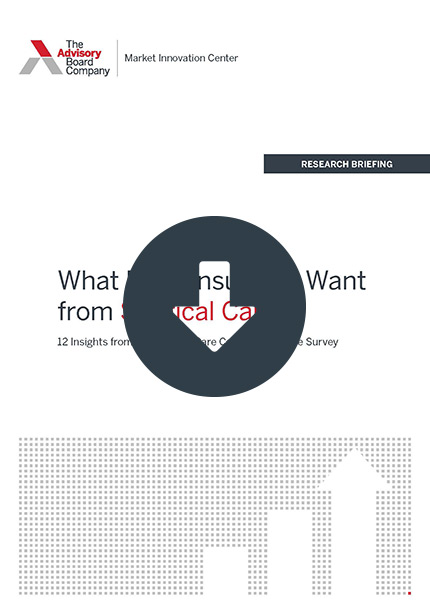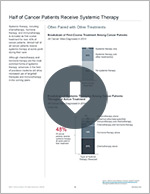Auto logout in seconds.
Continue LogoutEditor's note: This popular story from the Daily Briefing's archives was republished on April 30, 2019.
Reporting for STAT News, Eric Boodman examines the controversy behind a marathon surgery for appendix cancer—and one man's seven-state pursuit to obtain a surgery that even he calls “barbaric.”
Learn the latest clinical innovations in oncology
During the procedure—heated intraperitoneal chemotherapy (HIPEC) combined with cytoreduction—doctors feel within patient's abdomen with a gloved hand and remove all tumors with a tool that burns and cuts simultaneously, a process that can take hours.
Then, surgeons pump hot chemotherapy into the abdomen to kill off the smallest cancer cells, sometimes rocking a patient's upper body for more than an hour to make sure the chemo sinks into every crevice.
Doctors must remove ever tumor nodule, or else the cancer could return even before the surgery—which can take upwards of 16 hours—is over.
Controversy
The medical community is divided over whether HIPEC with cytoreduction is an effective treatment for appendix cancer, Boodman writes.
American surgeons, borrowing from their peers in Japan, first used the technique in the 1980s to treat tumors that have metastasized into the abdominal cavity.
As more surgeons gained experience with the surgery, mortality rates declined and more hospitals started performing the operation. The number of U.S. hospitals that do the procedure has climbed from about 10 in the early 2000s to about 100 today.
Yet the complication rate can be high, and many hospitals don't believe there are enough data to support cytoreduction with HIPEC, says David Bartlett, a surgical oncologist at UPMC.
Several studies have been published on the surgery, but many experts say they weren't sufficiently rigorous to prove whether heated chemo is beneficial. That may soon change, as more stringent studies are "on their way," including a randomized controlled trial in France, Boodman reports.
One man's journey
Amid the uncertainty, STAT News profiles one patient, Stephen Phillips, who fought hard to have the surgery.
Phillips was under no illusions that the surgery would be easy. "It's been referred to as barbaric. It's been referred to as having up to 10 abdominal surgeries at once. It's not for the faint of heart," he told STAT News before the surgery.
"It's like gearing up for the Stanley Cup championship and the Super Bowl, all rolled into one. Minus the hotdogs and the beer."
But his appendix cancer had metastasized, and if left untreated, the tumors could have grown, pushed against his organs, affected his digestion, and caused him to starve to death.
Phillips spent five months attempting to arrange the surgery—even though he could barely get out of bed, Boodman reports. He successfully fought his insurance company's initial decision not to cover the operation.
And he was thorough in picking his surgeon: Phillips talked with nine medical teams in seven states before finally settling on UPMC's Bartlett, who says he has performed the procedure more than 1,000 times. (Since so few hospitals perform the procedure—and few surgeons have performed it many times—patients often travel the country looking for the right doctor, says Laura Lambert, a surgical oncologist at UMass Memorial Medical Center.)
The day of the surgery was also a moment of truth: If Bartlett saw that Phillips had too many tumors, he would have sent him home. But the tumor count looked manageable, and after hours of cutting tumors and administering heated chemo, Phillips' surgery was complete.
Shortly after his surgery, however, Phillips found himself in the ICU and then back in the OR as the result of surgical complications: an infection that contributed to pneumonia, and a leakage in his intestinal tract that required surgery.
He was discharged a month post-surgery and is currently in recovery, Boodman reports (Boodman, STAT News, 3/24).
Next, see the latest clinical innovations in oncology
Find our take on the latest innovations in oncology and practices for maximizing a return on investment in our four research briefings.
Don't miss out on the latest Advisory Board insights
Create your free account to access 1 resource, including the latest research and webinars.
Want access without creating an account?
You have 1 free members-only resource remaining this month.
1 free members-only resources remaining
1 free members-only resources remaining
You've reached your limit of free insights
Become a member to access all of Advisory Board's resources, events, and experts
Never miss out on the latest innovative health care content tailored to you.
Benefits include:
You've reached your limit of free insights
Become a member to access all of Advisory Board's resources, events, and experts
Never miss out on the latest innovative health care content tailored to you.
Benefits include:
This content is available through your Curated Research partnership with Advisory Board. Click on ‘view this resource’ to read the full piece
Email ask@advisory.com to learn more
Click on ‘Become a Member’ to learn about the benefits of a Full-Access partnership with Advisory Board
Never miss out on the latest innovative health care content tailored to you.
Benefits Include:
This is for members only. Learn more.
Click on ‘Become a Member’ to learn about the benefits of a Full-Access partnership with Advisory Board
Never miss out on the latest innovative health care content tailored to you.



